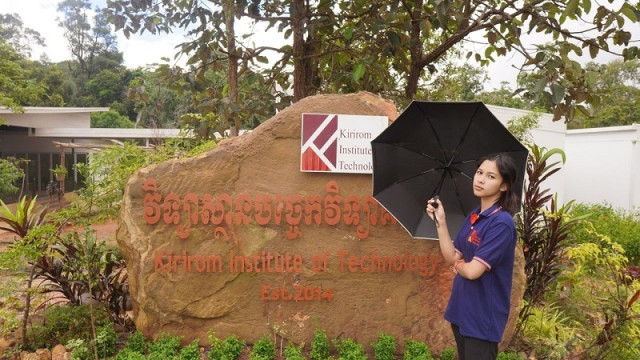Beware Borrowing from Multiple Institutions: Experts

- By Ou Sokmean
- and Meng Seavmey
- April 10, 2024 7:10 PM
PHNOM PENH – Banking experts have warned against borrowing from multiple institutions with a report showing Oddar Meanchey, Preah Vihear and Kratie provinces most at risk.
The latest Credit Bureau Cambodia’s report shows that these provinces have the highest number of borrowers with loans from three banks/institutions or more.
The number accounts for seven to eight percent of the total loans in each province. Nationally, four percent of nearly five million borrowers took loans from three or more banks/institutions.
Despite the smaller national figure, economists and bank experts expressed concern and encouraged borrowers to take loans from only one trustworthy institution to avoid unmanageable repayments.
In Oddar Meanchey, there are more than 90,000 borrowers, accounting for nearly 2,000,000 million riel by 2023. Of these, 66 percent borrowed from one bank/institution, 27 percent borrowed from two, and eight percent borrowed from three or more.
The rate of borrowers who repaid later than 30 days was 5.99 percent, while those who repaid later than 90 days was 4.78 percent, the report says.
In Preah Vihear, there are around 91,000 borrowers, accounting for 2,400,000 million riels. Of these, 68 percent borrowed from one bank/institution, 25 percent borrowed from two, while the other seven percent were from more than three banks/institutions.
Only 5.38 percent of borrowers in the province repaid later than 30 days, while 4.38 percent made repayments later than 90 days.
For Kratie province, more than 113,000 borrowers took loans worth 2,300,000 million riel in total. Of these, 70 percent borrowed from only one bank/institution, 23 percent from two and seven percent from three or more.
Of national borrowers, 76 percent got loans from only one bank/institution, with 20 percent from two, and only four percent from three or more.
Sok Voeun, chief executive officer of LOLC (Cambodia) Plc. and the deputy chairman of the board of directors of Cambodia Microfinance Association (CMA), said people who take loans from several institutions often find themselves with unmanageable debts.
People should borrow only from one bank/institution, using loans the right way in line with their lifestyle.
The CBC’s report shows that Svay Rieng and Preah Sihanouk provinces have the highest proportions (80 percent) of those who borrow only from one bank/institution, which were good figures.
“If we find out that they are having a trouble repaying an institution, we will advise them not to take another loan from a different institution to repay the current loan,” he said.
Voeun encouraged borrowers to resolve issues with the institution if they have a problem with repayments.
“We cannot take loans from an institution to repay another, or vice versa. The loan will become unmanageable sooner or later,” he said.
“This is why we always urge the borrowers to use the loan in the right way — not to use the money to gamble or buy anything that isn’t necessary in their daily lives.”
Hong Vannak, an economics researcher at the Royal Academy of Cambodia’s International Relations Institute, said borrowing from multiple institutions at the same time was highly risky.
Association of Banks in Cambodia principles allow borrowers to get loans from three institutions at the same time. However, loan assessment criteria determine the approval.
Vannak encouraged borrowers to avoid unregistered private institutions because these may take advantage of the loan collateral.
"They should consider the trustworthy institutions which can provide loans based on their needs and evaluate the condition on the amount and duration of repayment carefully," Vannak said.
"The institutions have legal resolution when borrowers cannot repay them."
There was also a risk for institutions that approve loans for borrowers who are also repaying other institutions. "In cases where borrowers do not have the capacity to repay, banks/institutions will have trouble dividing the collateral."
Sok Chan, the association’s spokesperson, said there is an assessment process on repayment ability before approving a loan to borrowers who have loans from other institutions.
The assessment focuses on repayment capacity, cash flow (expenditures), character and collateral.
“If the institutions do not assess these criteria comprehensively, even approving those taking loans from one bank/institution would be risky, let alone from three,” he said.
“In contrast, if the assessment is done according to the criteria comprehensively, the institution may approve the loans.”
CMA spokesperson Kaing Tongngy said institutions may have different criteria based on products and pricing.
“However, most institutions assess based on the five C’s principle: Character, Capacity, Capital, Collateral and Condition,” he said, adding that there were other ways to cut the risk of non-performing loans while supporting clients.
Non-performing applies to a bank loan that is subject to late repayment or is unlikely to be repaid.
Tongngy said there were pros and cons for borrowing from several institutions. Borrowers might have “product choices, better pricing, and right conditions” in accordance with their situation.
However, they might face difficulty managing the loans, so they must have strong financial planning.
From data from its 194 institution members, CBC says nearly five million people have loans from the banking system, amounting to 232,393,394 million riel, or about $57.6 billion.















